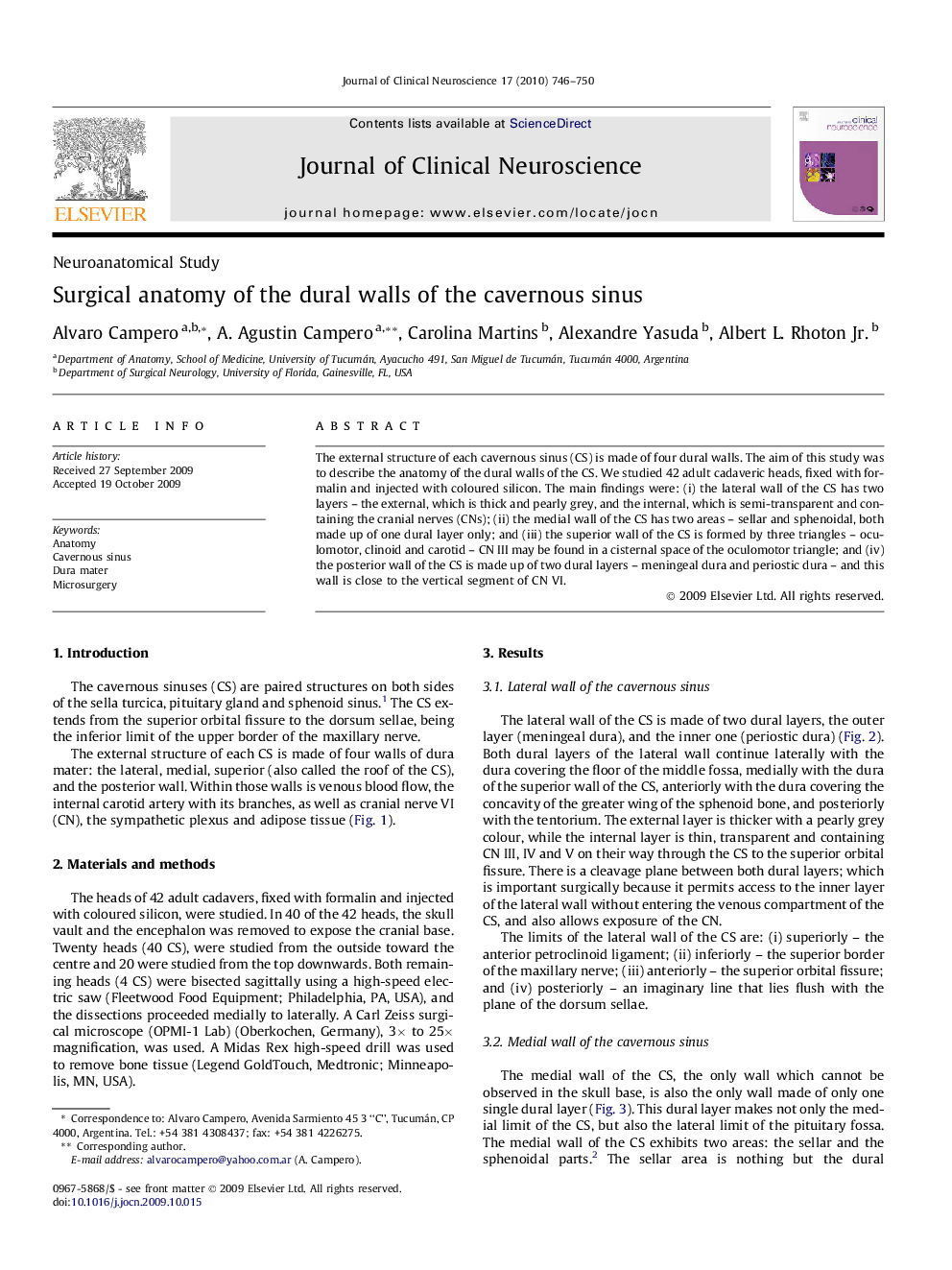| Article ID | Journal | Published Year | Pages | File Type |
|---|---|---|---|---|
| 3062801 | Journal of Clinical Neuroscience | 2010 | 5 Pages |
The external structure of each cavernous sinus (CS) is made of four dural walls. The aim of this study was to describe the anatomy of the dural walls of the CS. We studied 42 adult cadaveric heads, fixed with formalin and injected with coloured silicon. The main findings were: (i) the lateral wall of the CS has two layers – the external, which is thick and pearly grey, and the internal, which is semi-transparent and containing the cranial nerves (CNs); (ii) the medial wall of the CS has two areas – sellar and sphenoidal, both made up of one dural layer only; and (iii) the superior wall of the CS is formed by three triangles – oculomotor, clinoid and carotid – CN III may be found in a cisternal space of the oculomotor triangle; and (iv) the posterior wall of the CS is made up of two dural layers – meningeal dura and periostic dura – and this wall is close to the vertical segment of CN VI.
